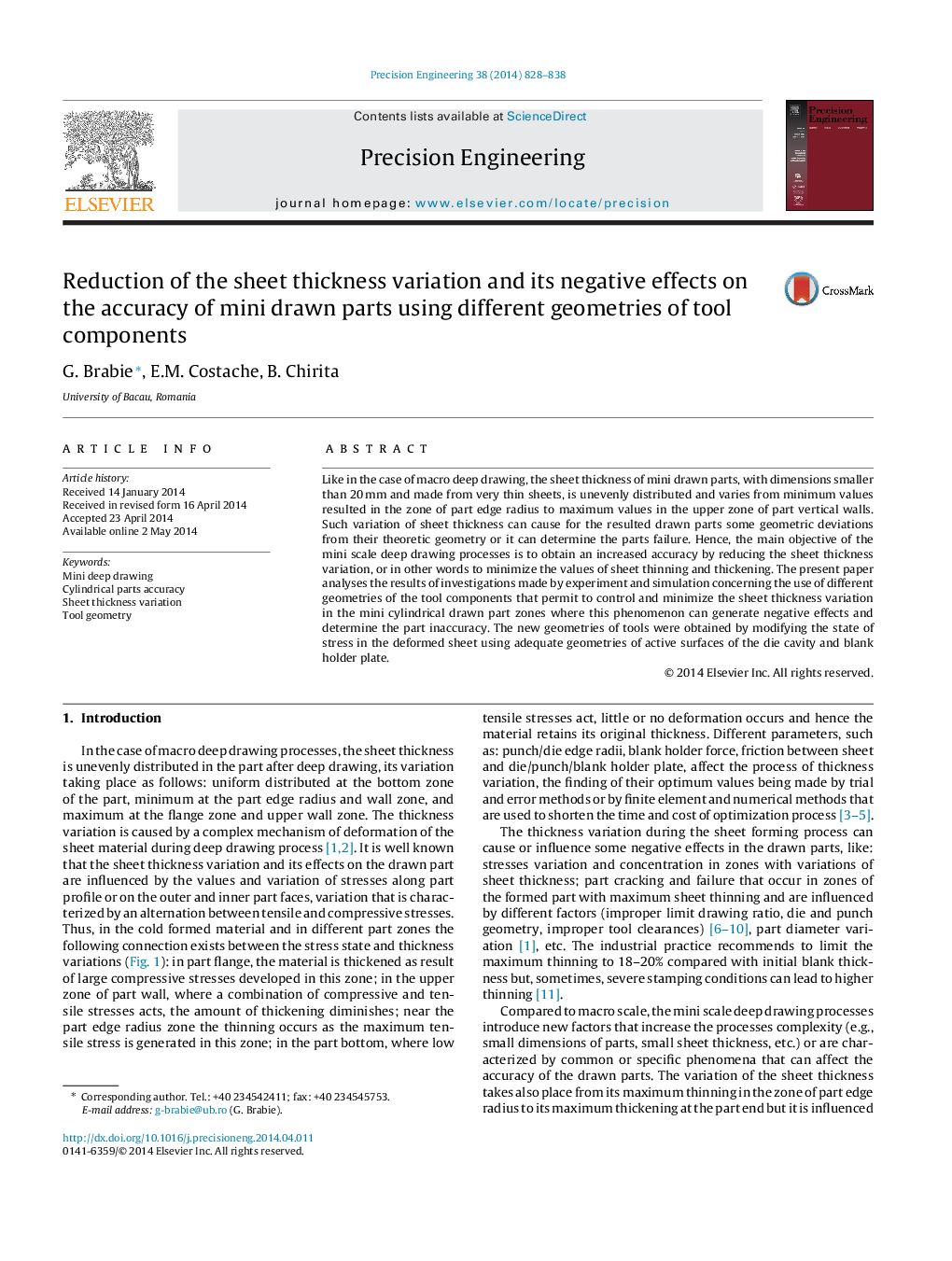| Article ID | Journal | Published Year | Pages | File Type |
|---|---|---|---|---|
| 803911 | Precision Engineering | 2014 | 11 Pages |
•The sheet thickness variation as a function of different factors was analyzed.•The effects of sheet thickness variation on part quality were also analyzed.•New tools were created to minimize the sheet thickness variation and its effects.•The new tool geometries were verified/validated by simulation and experiment.•The optimum tools were made with inclined active surfaces of die and blank holder.
Like in the case of macro deep drawing, the sheet thickness of mini drawn parts, with dimensions smaller than 20 mm and made from very thin sheets, is unevenly distributed and varies from minimum values resulted in the zone of part edge radius to maximum values in the upper zone of part vertical walls. Such variation of sheet thickness can cause for the resulted drawn parts some geometric deviations from their theoretic geometry or it can determine the parts failure. Hence, the main objective of the mini scale deep drawing processes is to obtain an increased accuracy by reducing the sheet thickness variation, or in other words to minimize the values of sheet thinning and thickening. The present paper analyses the results of investigations made by experiment and simulation concerning the use of different geometries of the tool components that permit to control and minimize the sheet thickness variation in the mini cylindrical drawn part zones where this phenomenon can generate negative effects and determine the part inaccuracy. The new geometries of tools were obtained by modifying the state of stress in the deformed sheet using adequate geometries of active surfaces of the die cavity and blank holder plate.
